Improving Building Design Processes and Design Management Practices: A Case Study
Abstract
1. Introduction
2. Research Design and Methods
- Diagnosis of the as-is situation—to develop a proper understanding of problems with theoretical and practical relevance using a triangulation of methods.
- Theoretical explanation of problems and possible solutions—to develop a theoretical understanding of the problems based on a root-cause analysis of poor practices.
- Intervention development and implementation—to develop and implement practical support in design processes and design management practices.
- Evaluation of interventions—to measure the effects of new interventions.
- Clarification of lessons learned—to formulate generalized evaluative statements about the impact of interventions.
2.1. Case Organization
2.2. Research Methods
2.2.1. Diagnosing the As-Is Situation
2.2.2. Intervention Development, Implementation, and Evaluation
3. Diagnosing As-Is Situation and Theoretical Explanation of Problems and Possible Solutions
3.1. Diagnosis of As-Is Situation
3.1.1. Survey Results
3.1.2. Observations of Design Development Stage and Communication Practices
3.1.3. ERP Database Analysis
3.1.4. Summary of Findings and Problem Areas
3.2. Theoretical Explanation of Problems and Possible Solutions
3.2.1. Lean Design as Part of Production
3.2.2. Lean Design Management
3.2.3. Design Theory
3.2.4. Summary and Discussion
4. Intervention Development, Implementation, and Evaluation
4.1. First Iteration: Development, Action Planning, and Implementation
4.2. Second Iteration: Development, Action Planning, and Implementation
4.3. Evaluation of Interventions
4.3.1. Focus Group Interview
4.3.2. Database Analysis Results
5. Summative Evaluation and Discussion
6. Conclusions
Author Contributions
Acknowledgments
Conflicts of Interest
Data Availability Statement
References
- Bucciarelli, L.L. Designing Engineers; MIT Press: Cambridge, MA, USA, 1994. [Google Scholar]
- Fischer, M.; Khanzode, A.; Reed, D.; Ashcraft, H.W. Integrating Project Delivery; Wiley: Hoboken, NJ, USA, 2017. [Google Scholar]
- Kleinsmann, M.S. Understanding Collaborative Design; TU Delft, Delft University of Technology: Delft, The Netherlands, 2006. [Google Scholar]
- Emmitt, S. Design Management for Architects; John Wiley & Sons: Hoboken, NJ, USA, 2014. [Google Scholar]
- Knotten, V. Building Design Management in the Early Stages. Ph.D. Thesis, Norwegian University of Science and Technology, Trondheim, Norway, 2017. [Google Scholar]
- Biotto, C. Integration of Overlapped Design and Construction Stages through Location-Based Planning Tools. Ph.D. Thesis, University of Huddersfield, Huddersfield, UK, 2019. [Google Scholar]
- Love, P.E.; Li, H. Quantifying the causes and costs of rework in construction. Constr. Manag. Econ. 2000, 18, 479–490. [Google Scholar] [CrossRef]
- Love, P.E.; Edwards, D.J.; Irani, Z. Forensic project management: An exploratory examination of the causal behavior of design-induced rework. IEEE Trans. Eng. Manag. 2008, 55, 234–247. [Google Scholar] [CrossRef]
- Chapman, J. Collapse of the Ramsgate walkway. Struct. Eng. 1998, 76, 1–10. [Google Scholar]
- Lopez, R.; Love, P.E.; Edwards, D.J.; Davis, P.R. Design error classification, causation, and prevention in construction engineering. J. Perform. Constr. Facil. 2010, 24, 399–408. [Google Scholar] [CrossRef]
- Borgstein, E.; Lamberts, R.; Hensen, J. Mapping failures in energy and environmental performance of buildings. Energy Build. 2018, 158, 476–485. [Google Scholar] [CrossRef]
- Koskela, L.; Ferrantelli, A.; Niiranen, J.; Pikas, E.; Dave, B. Epistemological Explanation of Lean Construction. J. Constr. Eng. Manag. 2018, 145, 04018131. [Google Scholar] [CrossRef]
- Kannengiesser, U.; Gero, J.S. An ontology of computer-aided design. In Computer-Aided Design Research and Development; Nova Science Publishers: Hauppauge, NY, USA, 2009. [Google Scholar]
- Koskela, L.; Huovila, P.; Leinonen, J. Design management in building construction: From theory to practice. J. Constr. Res. 2002, 3, 1–16. [Google Scholar] [CrossRef]
- Ballard, G.; Koskela, L. Design Should Be Managed as a Physical Process, Too. In Proceedings of the International Conference on Engineering Design, ICED’09, Stanford, CA, USA, 24–27 August 2009; pp. 251–261. [Google Scholar]
- Koskela, L. An Exploration towards a Production Theory and Its Application to Construction. Ph.D. Thesis, VTT Technical Research Centre of Finland, Espoo, Finland, 2000. [Google Scholar]
- Ballard, G.; Tommelein, I.; Koskela, L.; Howell, G. Lean construction tools and techniques. In Design and Construction; Routledge: Abingdon, UK, 2007; pp. 251–279. [Google Scholar]
- Koskela, L.; Codinhoto, R.; Tzortzopoulos, P.; Kagioglou, M. The Aristotelian proto-theory of design. In An Anthology of Theories and Models of Design; Springer: Berlin/Heidelberg, Germany, 2014; pp. 285–303. [Google Scholar]
- Snodgrass, A.; Coyne, R. Interpretation in Architecture: Design as Way of Thinking; Routledge: Abingdon, UK, 2013. [Google Scholar]
- Dilnot, C. Thinking design: A personal perspective on the development of the Design Research Society. Des. Stud. 2018, 54, 142–145. [Google Scholar] [CrossRef]
- Iivari, J.; Venable, J. Action Research and Design Science Research-Seemingly Similar but Decisively Dissimilar; ECIS: Stockholm and Uppsala, Sweden, 2009; pp. 1642–1653. [Google Scholar]
- Susman, G.I.; Evered, R.D. An assessment of the scientific merits of action research. Adm. Sci. Q. 1978, 23, 582–603. [Google Scholar] [CrossRef]
- Kuechler, B.; Vaishnavi, V. Extending prior research with design science research: Two patterns for DSRIS project generation. In Service-Oriented Perspectives in Design Science Research; Springer: Berlin/Heidelberg, Germany, 2011; pp. 166–175. [Google Scholar]
- Chachere, J.; Kunz, J.; Levitt, R. The Role of Reduced Latency in Integrated Concurrent Engineering; CIFE Working Paper# WP116; CIFE: Stanford, CA, USA, 2009. [Google Scholar]
- Lenfle, S.; Loch, C. Lost roots: How project management came to emphasize control over flexibility and novelty. Calif. Manag. Rev. 2010, 53, 32–55. [Google Scholar] [CrossRef]
- Ballard, G.; Koskela, L. On the Agenda of Design Management Research. In Proceedings of the Annual Conference of the International Group for Lean Construction, Guarujá, Brazil, 13–15 August 1998; pp. 52–69. [Google Scholar]
- Koskela, L.; Howell, G.; Pikas, E.; Dave, B. If CPM is so bad, why have we been using it so long? In Proceedings of the 22th International Group for Lean Construction Conference, Oslo, Norway, 23–27 June 2014.
- Love, T. Philosophy of design: A meta-theoretical structure for design theory. Des. Stud. 2000, 21, 293–313. [Google Scholar] [CrossRef]
- Tilley, P.A. Lean design management: A new paradigm for managing the design and documentation process to improve quality? In Proceedings of the 13th International Group for Lean Construction Conference, Sydney, Australia, 19–21 July 2005; p. 283. [Google Scholar]
- Ballard, H.G. The Last Planner System of Production Control. Ph.D. Thesis, University of Birmingham, Birmingham, UK, 2000. [Google Scholar]
- Çıdık, M.S.; Boyd, D. “Shared sense of purposefulness”: A new concept to understand the practice of coordinating design in construction. Constr. Manag. Econ. 2019, 1–14. [Google Scholar] [CrossRef]
- Rekola, M.; Mäkeläinen, T.; Häkkinen, T. The role of design management in the sustainable building process. Archit. Eng. Des. Manag. 2012, 8, 78–89. [Google Scholar] [CrossRef]
- Cross, N.; Roozenburg, N. Modelling the design process in engineering and in architecture. J. Eng. Des. 1992, 3, 325–337. [Google Scholar] [CrossRef]
- Pikas, E. Causality and Interpretation: Integrating the Technical and Social Aspects of Design. Ph.D. Thesis, Aalto University, Espoo, Finland, 2019. [Google Scholar]
- Hubka, V.; Eder, W.E. Design Science: Introduction to the Needs, Scope and Organization of Engineering Design Knowledge; Springer: Berlin/Heidelberg, Germany, 1996. [Google Scholar]
- Jones, J.C. Design Methods; John Wiley and Sons: Hoboken, NJ, USA, 1992. [Google Scholar]
- Norman, D.A.; Draper, S.W. User Centered System Design: New Perspectives on Human-Computer Interaction; CRC Press: Boca Raton, FL, USA, 1986; Volume 3161. [Google Scholar]
- Koskela, L.J.; Ballard, G. The two pillars of design theory: Method of analysis and rhetoric. In Proceedings of the International Conference on Engineering Design, ICED13, Seoul, Korea, 19–22 August 2013; pp. 1–10. [Google Scholar]
- Hintikka, J.; Remes, U. The Method of Analysis: Its Geometrical Origin and Its General Significance; Springer Science & Business Media: Berlin, Germany, 1974; Volume 25. [Google Scholar]
- Herrick, J.A. History and Theory of Rhetoric: An Introduction; Routledge: Abingdon, UK, 2015. [Google Scholar]
- Stumpf, S. Analysis and Representation of Rhetorical Construction of Understanding in Design Teams’ Experiential Learning. Ph.D. Thesis, University College London, London, UK, 2001. [Google Scholar]
- Kaufer, D.S.; Butler, B.S. Rhetoric and the Arts of Design; Routledge: Abingdon, UK, 2013. [Google Scholar]
- Buchanan, R. Declaration by design: Rhetoric, argument, and demonstration in design practice. Des. Issues 1985, 4–22. [Google Scholar] [CrossRef]
- Ballard, G.; Koskela, L. Rhetoric and design. In Proceedings of the 19th International Conference on Engineering Design, Seoul, Korea, 19–22 August 2013; The Design Society: Glasgow, UK, 2013; pp. 1–10. [Google Scholar]
- Halstrøm, P.L. Rhetorical Design Studies: The Art of Making Design Choices Explicit; The Royal Danish Academy of Fine Arts: Copenhagen, Denmark, 2017. [Google Scholar]
- Aristotle, F. The Art of Rhetoric; HarperCollins Publishers: New York, NY, USA, 2012. [Google Scholar]
- Kroll, E.; Koskela, L. Applying the proto-theory of design to explain and modify the parameter analysis method of conceptual design. Int. J. Des. Creat. Innov. 2015, 4, 1–25. [Google Scholar] [CrossRef][Green Version]
- Woods, D. Rasmussen’s SRK 30 Years Later: Is Human Factors Best in 3’s? In Proceedings of the Human Factors and Ergonomics Society Annual Meeting, San Antonio, TX, USA, 19–23 October 2009; SAGE Publications: Los Angeles, CA, USA, 2009; pp. 217–221. [Google Scholar]
- United Nations. Transforming Our World: The 2030 Agenda for Sustainable Development; United Nations: San Francisco, CA, USA, 2015. [Google Scholar]
- Freire, J.; Alarcón, L.F. Achieving lean design process: Improvement methodology. J. Constr. Eng. Manag. 2002, 128, 248–256. [Google Scholar] [CrossRef]
- Uusitalo, P.; Seppänen, O.; Lappalainen, E.; Peltokorpi, A.; Olivieri, H. Applying Level of Detail in a BIM-Based Project: An Overall Process for Lean Design Management. Buildings 2019, 9, 109. [Google Scholar] [CrossRef]
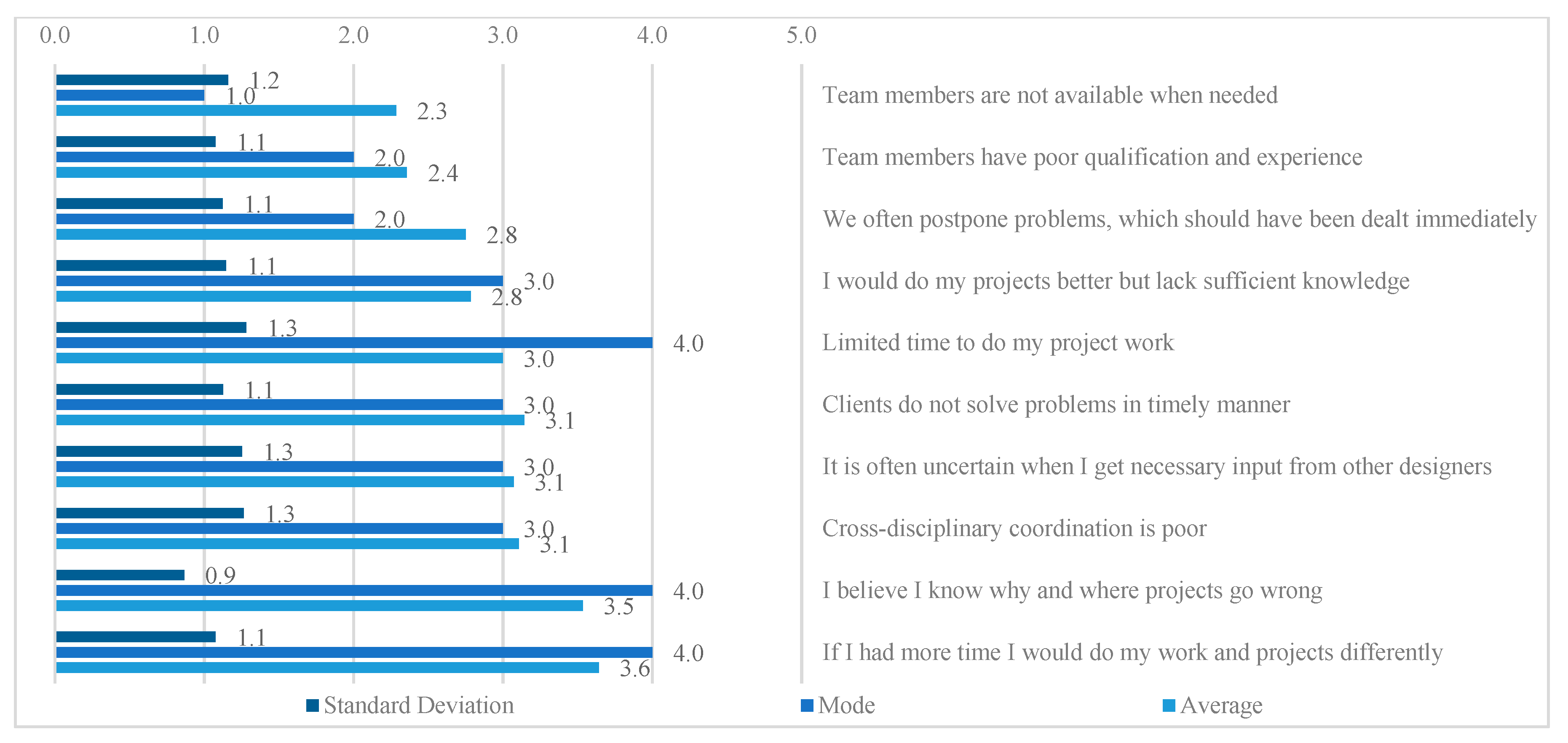

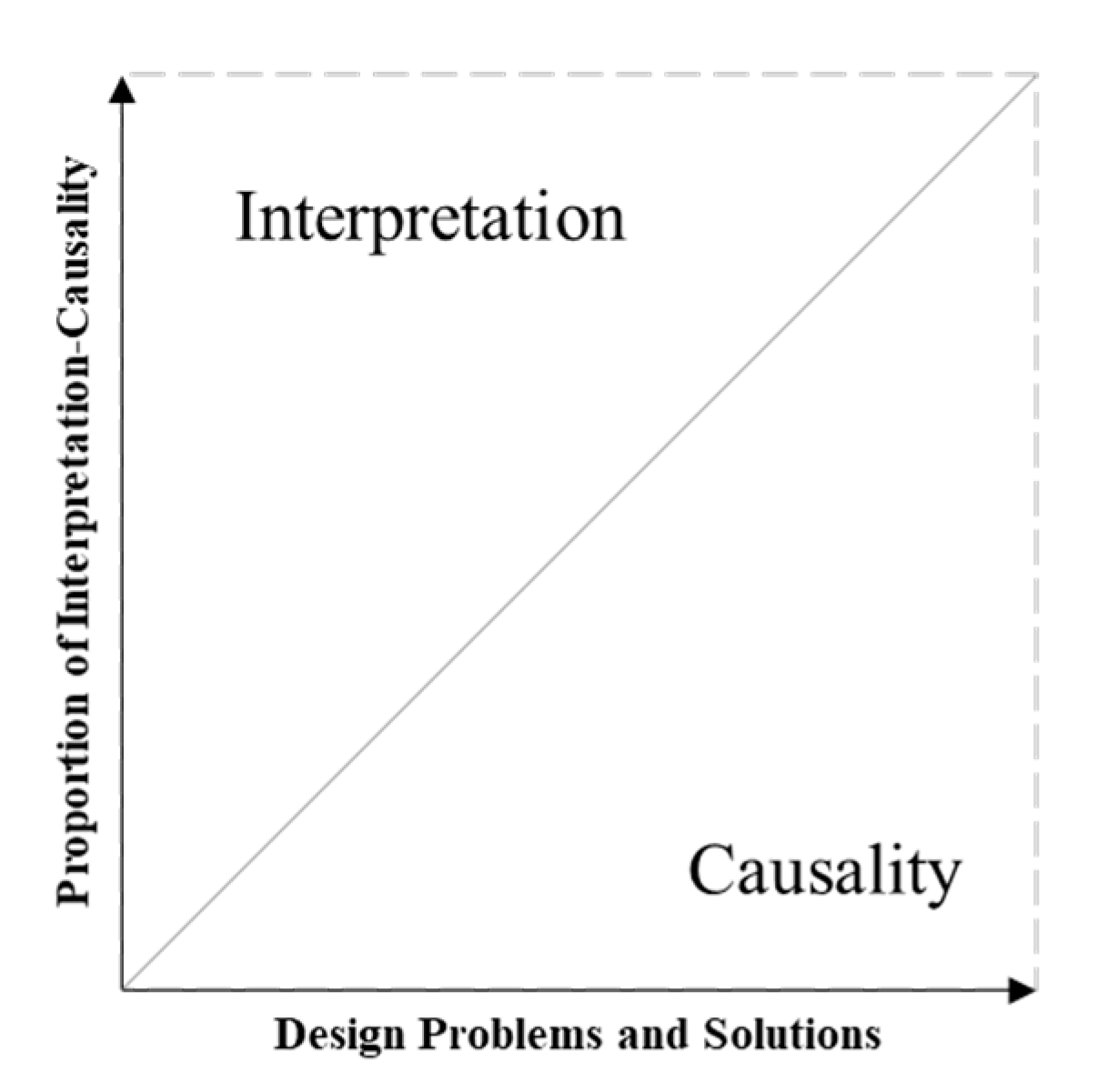
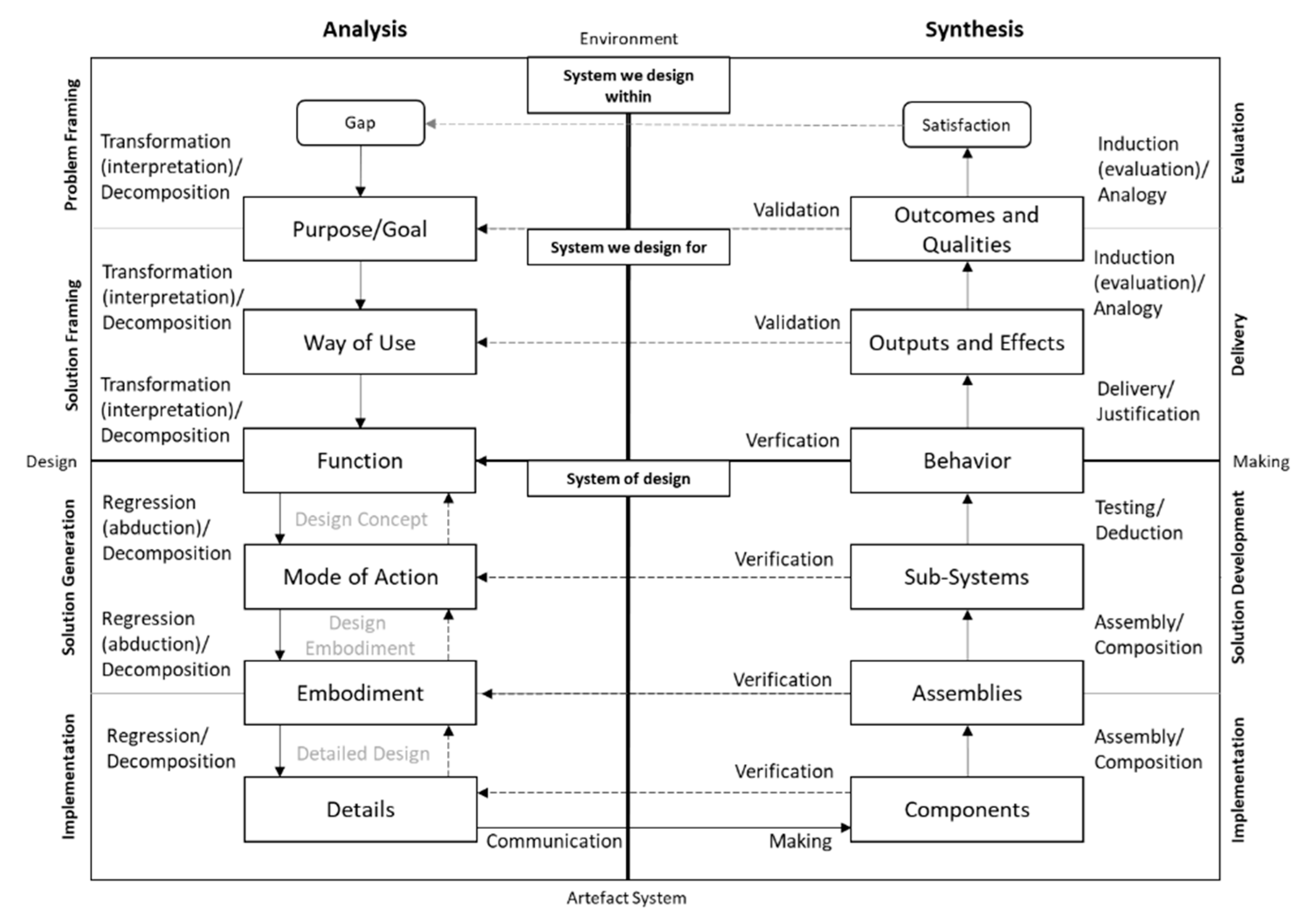
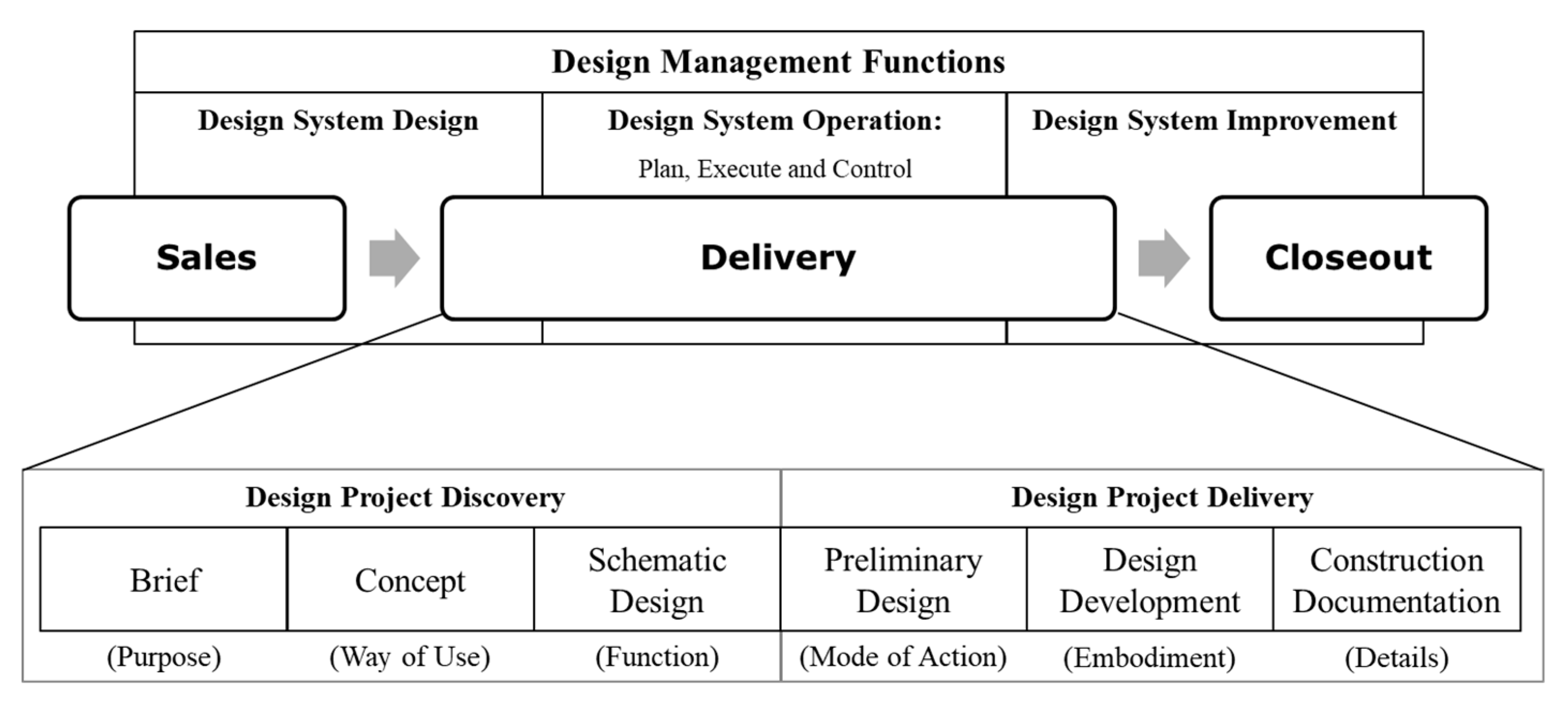
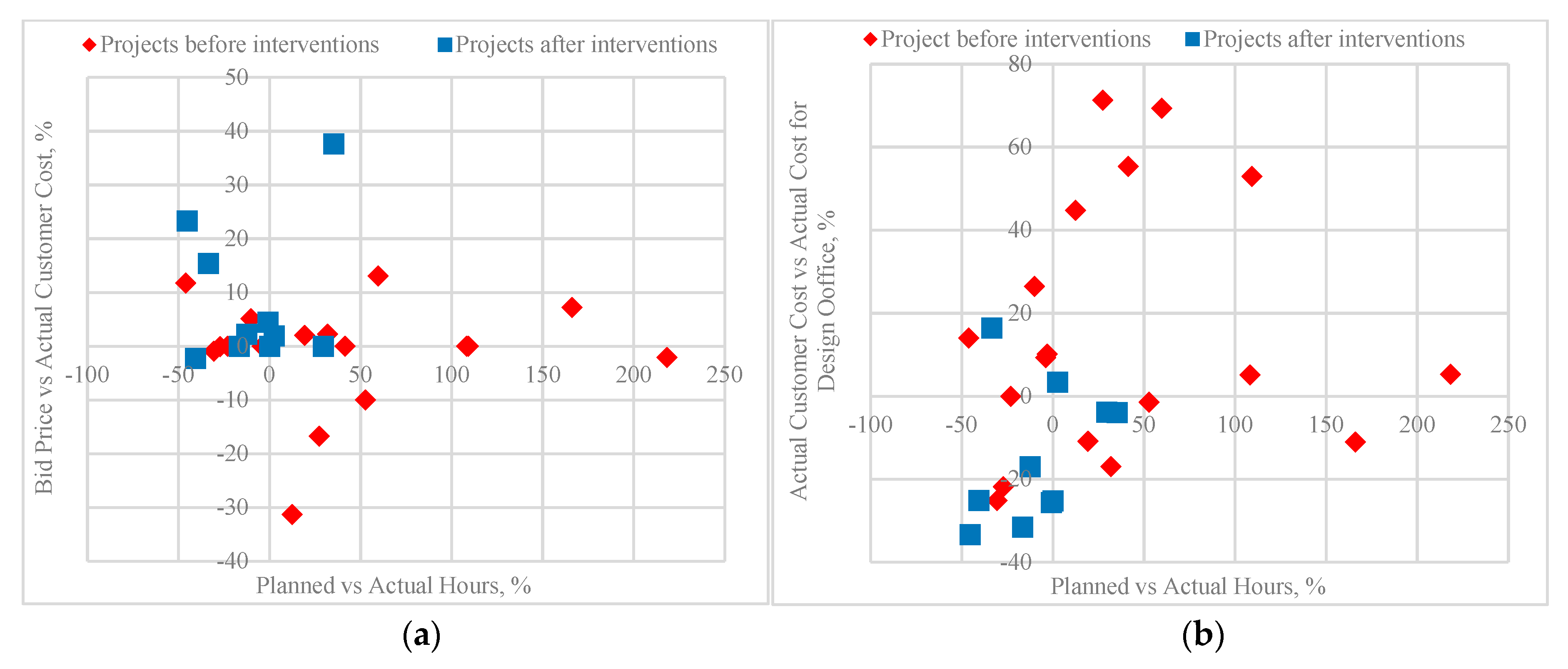
| Dimensions | Contributing Concepts |
|---|---|
| Lean Design as Part of Production | Transformation, flow, and value theory of design production |
| Lean Design Management | Design, operation, and improvement of design production systems Strategies, principles, methods, and tools compatible with the flow and value views |
| Design theory | Causality and interpretation Technical object- and social subject-oriented activities Method of analysis and design rhetoric |
© 2020 by the authors. Licensee MDPI, Basel, Switzerland. This article is an open access article distributed under the terms and conditions of the Creative Commons Attribution (CC BY) license (http://creativecommons.org/licenses/by/4.0/).
Share and Cite
Pikas, E.; Koskela, L.; Seppänen, O. Improving Building Design Processes and Design Management Practices: A Case Study. Sustainability 2020, 12, 911. https://doi.org/10.3390/su12030911
Pikas E, Koskela L, Seppänen O. Improving Building Design Processes and Design Management Practices: A Case Study. Sustainability. 2020; 12(3):911. https://doi.org/10.3390/su12030911
Chicago/Turabian StylePikas, Ergo, Lauri Koskela, and Olli Seppänen. 2020. "Improving Building Design Processes and Design Management Practices: A Case Study" Sustainability 12, no. 3: 911. https://doi.org/10.3390/su12030911
APA StylePikas, E., Koskela, L., & Seppänen, O. (2020). Improving Building Design Processes and Design Management Practices: A Case Study. Sustainability, 12(3), 911. https://doi.org/10.3390/su12030911







